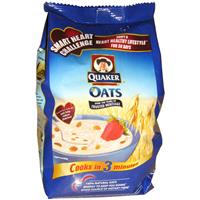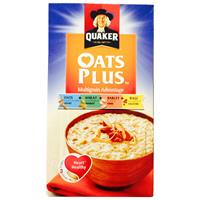
Kellogg's Honey loops
Products in ‘Cereals & Muesli’ category range from 2.5 - 5


- Compliments of Vitamins & MineralsThe micronutrients (Vitamins/Minerals) play an important role by ensuring proper functioning of cells and tissues.Each vitamin and trace mineral play a specific role in the body. For example, Vitamin C acts as antioxidant protecting cells from environmental damage, healing wounds and maintaining connective tissue whereas minerals like sodium, potassium and chloride function as electrolytes that assist in communication between cells necessary for nerve impulses and muscle contraction.Some products mimic the nature by adding artificial vitamins or minerals which have an identical form and function to those found in nature, but they are manufactured synthetically to meet extremely high standards of processed products.
- Fibre SourceProduct with decent amount of Dietary Fibre (5%-10% of day's recommended intake) is better than a similar one with zero or negligible amount of fibre) - at least it's a start!Packaged foods generally do not have Dietary fibre so a product with some amount of dietary fibre is always welcome.Fibre is not a nutrient but plays a key role in managing your body regularities - Bowel movement - Keeping constipation at bay, a control on Blood Sugar spike and check on blood cholesterol.However, follow the principle of balance and don't go overboard by eating only fibre rich food.
- Know your Food - Flavouring SubstancesFlavouring Substances are added to Food products either to regain the flavour it would have lost during processing e.g. juices or to add a new desired flavour e.g. in case of biscuits, vanilla flavour may be added to otherwise food product without any flavour.Based on the resemblance of the flavouring substance to its natural occurrence, it is classified as natural, nature identical or artificial flavouring substance. Read this blog to find more about different flavouring substances.
- Highly Processed!Additives are added to the packaged foods for different reasons varying from increasing shelf life, to provide flavour and texture, increasing nutrition quality or required to manufacture some types of food.One of the ways to determine the degree of Processing is the number of additives you find in the ingredient list. The higher the number of additives greater is the degree of processing. Additives can be identified by looking for ingredients that begin with 'E' and have a number in them.It is generally recommended that food that is closer to nature is better hence it is better to choose food products with lesser number of additives.
- Loaded with Sugar
Each serving of the product has at least 1 teaspoon (5g) of sugar in it which makes it a sugar rich product.
One of the immediate side effects of high sugar intake is increase in fat deposits in the body which may increase your risk for obesity,diabetes and a host of other conditions.
Also, some studies suggest that its not FAT but sugar that is the cause for excess weight gain. Hence, best to avoid.
Disclaimer:Product Analysis is based on general practices in the field of Nutrition. Please check with or consult a qualified and licensed medical professional for its suitability to you.

















